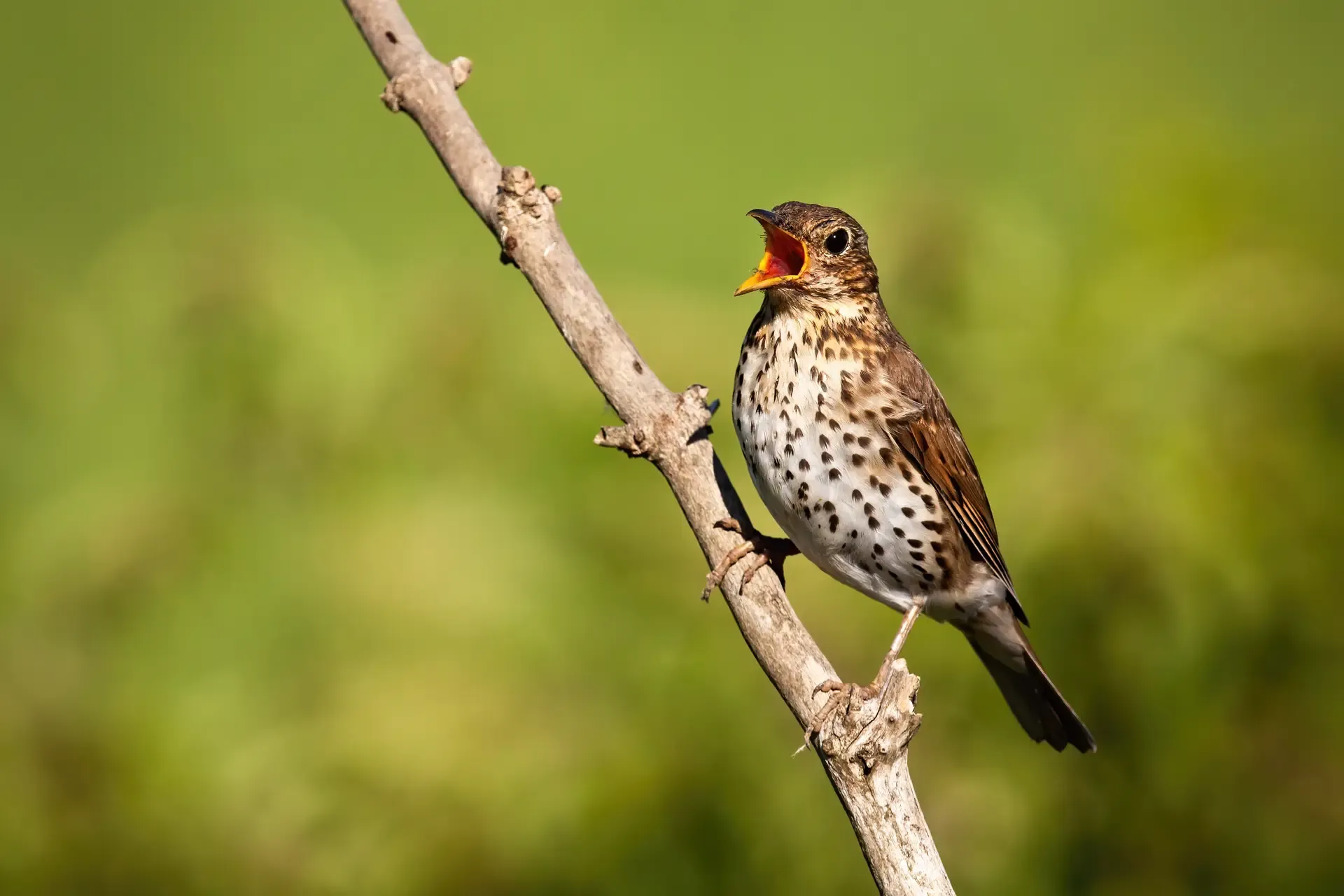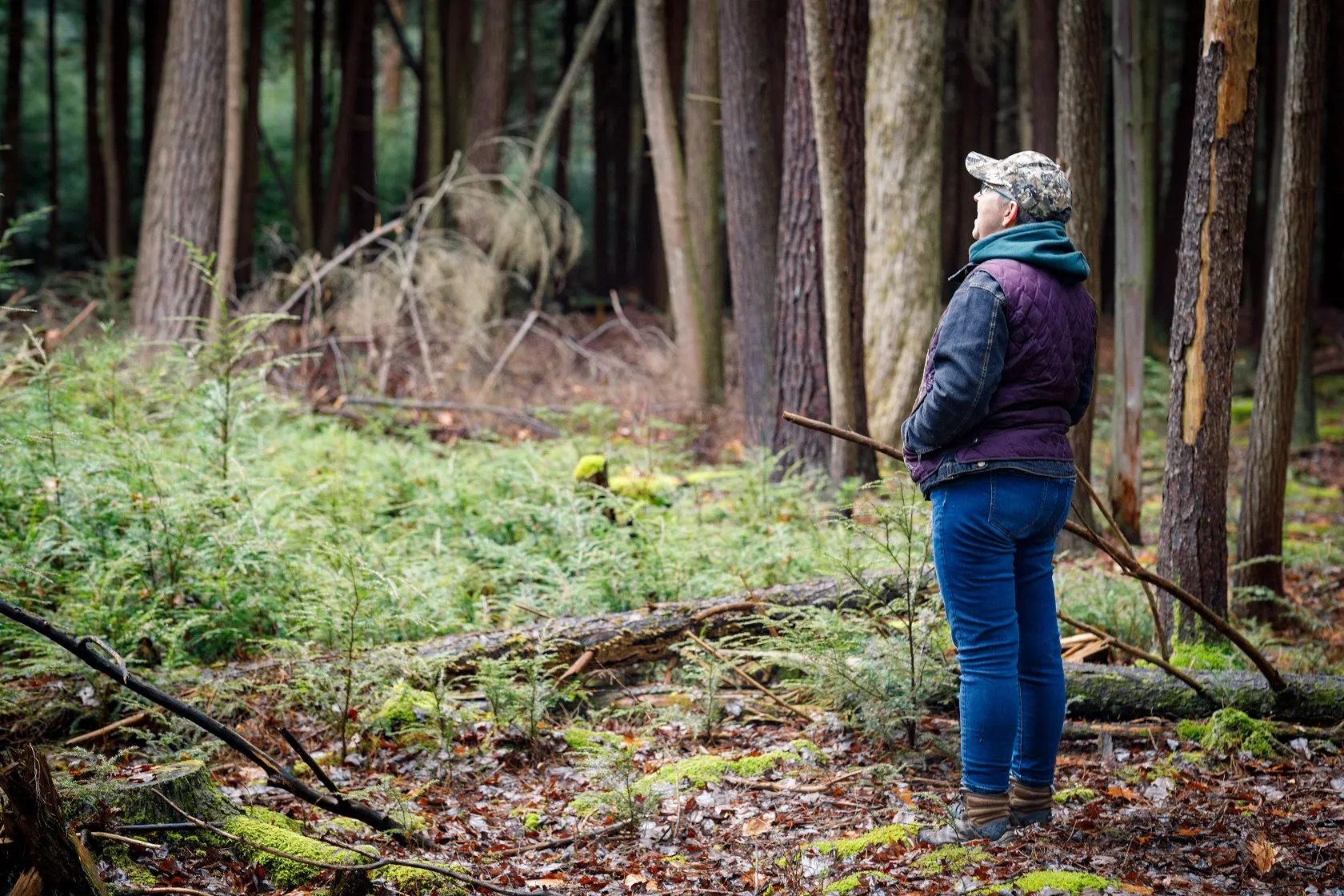Carbon + Biodiversity – A New Opportunity for the Market

A black bear stands in tall shrubs and looks towards the camera. It's body is mostly obscured by leafy coverage.
Forest carbon has increasingly become a vital piece of the climate mitigation puzzle. Project developers have designed interventions that help trees capture and store additional carbon, which can then be sold to companies on the voluntary carbon market as verified credits. But another major contribution these projects make to helping the planet heal is the array of environmental co-benefits that improve the health and wellbeing of our forests and the life within them.
One vital co-benefit of forest carbon projects is biodiversity. This is good news for the planet as the global climate and biodiversity crises are interlinked. To solve for one means to solve for the other, and developing effective climate solutions means finding ways to sequester carbon while safeguarding the ecosystems most at risk.
Programs like the Family Forest Carbon Program and other nature-based solutions engage landowners in management practices that not only capture and store additional carbon from the atmosphere, but also enhance and preserve critical ecosystems. For example, improved forest management practices allow trees to grow for longer periods in between harvests, and in turn, those older and larger trees enhance water quality by reducing sediment runoff and stream pollution. This is a benefit to both the wildlife and surrounding communities which rely on these regional streams, rivers and lakes for drinking water and recreation.
Additionally, afforestation practices establish new forested ecosystems on land that had not previously been forested, which not only allows for more carbon to be removed from the atmosphere, but also addresses environmental issues like soil erosion and desertification on degraded or unproductive pasture and crop lands. These targeted, sustainable management practices help create the ecological conditions and compositions required to support a stronger web of increased biodiversity.
MARKET DEMAND
And buyers have taken notice. Demand for biodiversity credits is expected to surge in the coming years, especially following last year’s Kunming-Montreal Global Biodiversity Framework agreement at COP15. With many species in catastrophic decline and the devastating impact that will have on food security, human health and economies, biodiversity credits could offer the private sector an avenue to proactively fund and support critical ecosystems.
The challenge facing the market is how to quantifiably measure and verify the co-benefits of biodiversity, especially within the scope of a carbon project. While the makeup of carbon is the same everywhere around the world, biodiversity is vastly different across states, regions, countries, and continents. The management interventions, regulations, and costs needed to support a Wood Thrush in the US Central Appalachians differ dramatically from a Blue-Eyed Ground Dove in Brazil. This lack of quantifiable measurement, despite vigorous efforts by conservation organizations across the globe, has held back a standardized market that would unlock the financial resources to drive the meaningful impact needed for biodiversity protection.

A wood thrush sings from its perch on a small tree.
PROMISING PROGRESS
While funding is slowly being unlocked, investors and financial institutions are demanding increased transparency from the corporate community when disclosing their impact on biodiversity within their business models. Emerging standards and frameworks for measuring biodiversity impact are being developed in real time to address these demands. For example, the Taskforce for Nature-related Financial Disclosures (TNFD) is launching a risk management and disclosure framework for organizations to more accurately report on and drive impact toward nature-related risks, including impacts on biodiversity loss due to a company’s business footprint. Additionally, the Kunming-Montreal Global Biodiversity Framework, adopted at COP 15, is designed to develop a target-based roadmap to protect nature, with a commitment by more than 200 nations to protect 30% of the world’s land, oceans and inland water.
The goals of these emerging standards and frameworks are big, ambitious and long-term. But more standardization and guidance on how to assess biodiversity and other nature-related risks will allow financial institutions and companies to better consider and incorporate nature-related impact opportunities into their strategic planning, risk management and asset allocation decisions. More workable standards will also be key to creating a future stand-alone biodiversity market that provides the financial resources critically needed to fund and scale high-quality, credible biodiversity solutions.
THE FUTURE OF BIODIVERSITY CREDITS
In the meantime, we cannot let biodiversity fall behind as the carbon market progresses. AFF and many other organizations are exploring if and how developing quantification methodologies can be applied to forest carbon practices to more accurately measure biodiversity co-benefits. This resulting “carbon + biodiversity” credit would mean more value for buyers and our planet – but also more cost due to the quantification needs. For these enhanced credits to succeed, carbon credit buyers would need to put more funding towards their nature positive targets and pay a premium for a verified “carbon + biodiversity” credit.
Forest carbon programs have tremendous potential to help solve both the climate and the biodiversity crises. To unlock this potential though, collaboration is needed between project developers, investor and corporate communities, governments and standard setting bodies at the global level to create workable standards that encourage more investment. AFF is committed to engaging family landowners in forest management practices that sequester carbon and improve ecosystems, while working with partners to advocate for and develop market-based opportunities for nature.
Interested in partnering with us as we expand our climate and biodiversity impact? Connect with us online or email us at ffcp_partnerships@forestfoundation.org to learn how we can partner together on climate.
Related Articles

December 18, 2025
Improving Wildlife Habitat with the Family Forest Carbon Program
For many landowners, spotting a fox, songbird, or other wildlife on their property is one of the highlights of spending time on their land. In this post we look at some examples of management practices you may see in your FFCP forest management plan and how they help create the ideal conditions for certain wildlife species.

December 16, 2025
Family Forest Carbon Program's First Ever Credits Delivered to REI Co-op
Today, REI becomes the first buyer to receive carbon credits from the Family Forest Carbon Program (FFCP), a high-integrity forest carbon project designed for small-acreage landowners.

December 4, 2025
Forest Carbon Project Issued First Ever Credits
Conservation organizations the American Forest Foundation (AFF) and The Nature Conservancy (TNC) announced today the issuance of improved forest management (IFM) carbon credits to the Family Forest Carbon Program (FFCP) from standards setter Verra under its Verified Carbon Standard (VCS) Program. This marks the first issuance of credits produced using Verra’s VM0045 improved forest management (IFM) methodology, which was co-developed by Verra, AFF, TNC, and TerraCarbon.